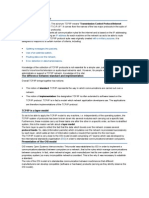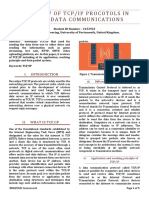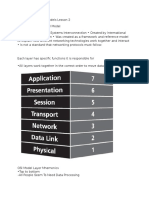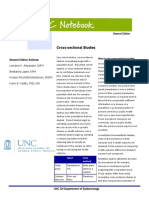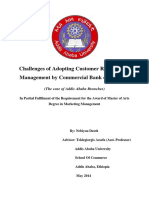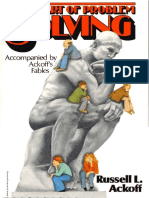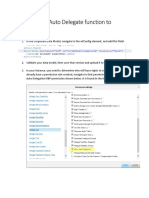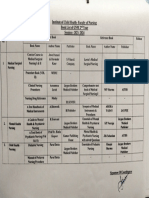0% found this document useful (0 votes)
28 views19 pages11.) Lecture 4 TCPIP Overview
The document outlines the TCP/IP model, which is a four-layered suite of communication protocols developed by the Department of Defense. It compares the TCP/IP model with the OSI model, highlighting the functions of each layer, including the Process/Application, Host-to-Host, Internet, and Network Access layers. The document also discusses the historical context of TCP/IP's development and its significance in the evolution of the Internet.
Uploaded by
czaetvwpCopyright
© © All Rights Reserved
We take content rights seriously. If you suspect this is your content, claim it here.
Available Formats
Download as PDF, TXT or read online on Scribd
0% found this document useful (0 votes)
28 views19 pages11.) Lecture 4 TCPIP Overview
The document outlines the TCP/IP model, which is a four-layered suite of communication protocols developed by the Department of Defense. It compares the TCP/IP model with the OSI model, highlighting the functions of each layer, including the Process/Application, Host-to-Host, Internet, and Network Access layers. The document also discusses the historical context of TCP/IP's development and its significance in the evolution of the Internet.
Uploaded by
czaetvwpCopyright
© © All Rights Reserved
We take content rights seriously. If you suspect this is your content, claim it here.
Available Formats
Download as PDF, TXT or read online on Scribd
/ 19






